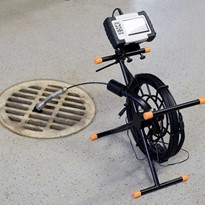Creating products that customers want while meeting safety and regulatory standards is the focus of quality management in today's competitive market. Meeting and surpassing quality standards can help companies stand out from competitors, leading to higher profits and customer satisfaction. Technology has changed quality control processes, making them more efficient and comprehensive. This article will explain how inspection cameras can be the key to product quality success.
What is an Inspection Camera?
An inspection camera, or snake camera, is a small, flexible camera that can fit into tight or hard-to-reach spaces. It is used to see inside areas that are difficult to access, such as plumbing or machinery. The camera provides live, close-up images from these hidden spots.
The setup usually includes a long, flexible probe with a camera at the end, connected to a handheld unit. Some models have a small screen for direct viewing, while others can send images wirelessly to a computer or phone.
The Role of Inspection Camera Scopes in Quality Control
Here’s how inspection cameras are connected to quality control
- Visual Inspection
Inspection cameras enable visual examination of areas that are difficult or impossible to see with the naked eye. This is particularly useful for inspecting complex machinery, internal components, or confined spaces. These cameras provide high-resolution images or video, allowing inspectors to detect even the smallest defects that might be missed during manual inspections.
- Non-Destructive Testing (NDT)
Inspection cameras are often used in non-destructive testing, allowing for the examination of products or materials without causing any damage. This is critical in industries where maintaining the integrity of the product is essential, such as aerospace, automotive, and manufacturing.
- Data Documentation
Inspection cameras help to ensure that inspections are consistent and objective. Because many inspection cameras allow for the recording and documentation of inspections, providing a permanent record that can be used for future reference, or audits.
- Access to Hard-to-Reach Areas
Inspection cameras can be used to inspect areas that are otherwise inaccessible, such as inside engines, pipes, or machinery. This capability is vital for ensuring that all aspects of a product or meet quality standards, even in the most challenging environments.
Benefits of Inspection Cameras in Quality Control
-
Enhanced Defect Detection
Borescope inspection cameras provide high-resolution images and access to hidden or hard-to-reach areas, which traditional methods might miss. This capability improves the likelihood of detecting defects early in the manufacturing process.
-
Time and Cost Savings
Traditional inspection methods usually involve taking apart equipment, which can cause long periods of downtime. Borescope inspection cameras solve this problem by allowing inspectors to examine internal components without taking them apart. This not only reduces inspection time but also lowers the risk of damage during disassembly and reassembly, leading to cost savings.
-
Improved Safety
Borescopes enhance safety by reducing the need for inspectors to enter confined or dangerous spaces. This lowers the risk of accidents and exposure to dangerous materials.
-
Accuracy and Precision
Borescopes offer high accuracy and precision, which aids in making smart choices and ensuring that corrective actions are confidently taken.
The Trends of Inspection Cameras in QA
Based on a thorough industry analysis, there are several key trends that will significantly improve quality control across industries. The following are the major trends influencing the future development of inspection cameras
-
Integration with IoT
The integration of digital inspection cameras with IoT technologies allows for real-time data collection, remote monitoring, and immediate analysis of inspection results. This can lead to higher operational efficiency, reduced downtime, and improved decision-making processes. The continuous data flow from IoT-enabled devices enables predictive maintenance and faster response times, directly impacting the quality control process.
-
AI and Machine Learning
AI and machine learning in inspection cameras improve defect detection and image processing. These technologies automate defect identification and classification, and enable predictive analytics. AI-powered cameras continuously learn from previous inspections, reducing human error and speeding up the process for more consistent, high-quality outputs in manufacturing and other industries.
-
Miniaturisation
The trend toward miniaturisation is resulting in smaller, lighter, and easier to carry while still working just as well. These compact devices are increasingly used in tight or hard-to-reach spaces, overcoming previous challenges in quality control inspections. The portability of these cameras allows for greater flexibility in field inspections, on-site evaluations, and in-line production checks, particularly helpful in industries with limited space.
-
Green Technologies
As industries move towards more sustainable practices, inspection cameras are also becoming greener. There is a growing demand for energy-efficient, long-lasting, and eco-friendly devices. This shift is driven by both regulations and companies' commitment to reducing their environmental impact. Future inspection cameras will align with green technology principles to support quality control and sustainability goals.
In conclusion, companies that consistently deliver high-quality products can stand out from the competition, leading to happier customers and better profits. Technological advances have made quality control more efficient and accurate, with inspection cameras playing a key role. These cameras allow for detailed inspections in hard-to-reach places and enable non-destructive testing, ensuring top-notch product quality.
With trends like IoT integration, AI, miniaturisation, and green technologies, inspection cameras are becoming even more effective. By using these advanced tools, companies can catch defects early, keep thorough records, and conduct safe, thorough evaluations. As technology continues to evolve, inspection cameras will be important in maintaining high standards of quality and sustainability.
Compare Inspection Camera with IndustrySearch!
Are you prepared to enhance your quality control with inspection cameras? IndustrySearch has assisted over 6,719,000 buyers in making informed decisions since 2011.
- Compare prices, specs, and features to find the right inspection camera for your needs.
- Evaluate maintenance and consumable costs for long-term value.
- Read reviews and select from trusted Australian suppliers.
Get the best inspection camera for your business—compare options now!
FAQ
Q: What is an inspection camera?
A: An inspection camera, also known as a snake camera, is a small, flexible camera used to view hard-to-reach or hidden areas, such as inside machinery or plumbing. It typically features a long, flexible probe with a camera at the end, connected to a handheld unit. Some models include a built-in screen, while others send images wirelessly to a computer or mobile device.
Q: How do inspection cameras improve quality control?
Inspection cameras enhance quality control by providing high-resolution images of areas that are difficult or impossible to inspect manually. This allows for early detection of defects, non-destructive testing, and detailed documentation, all of which help ensure that products meet quality standards.
Q: Can inspection cameras be used for non-destructive testing (NDT)?
A: Yes, inspection cameras are often used in non-destructive testing (NDT) to examine products and materials without causing any damage,

.jpeg)

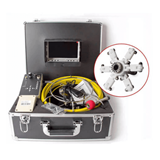

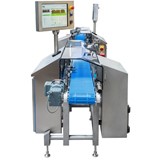
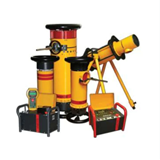


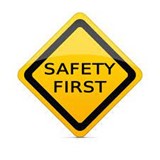
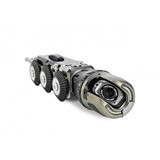

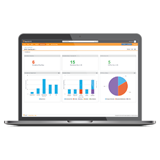

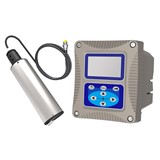


-205x205.jpeg)
